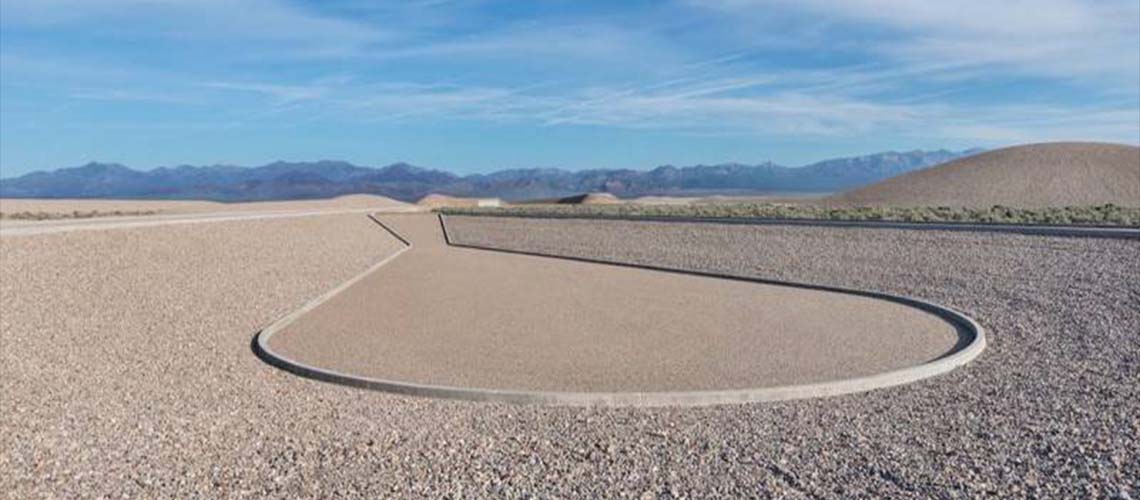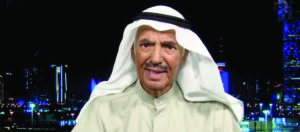Michael Heizer’s City has been finally revealed, half a century after the land artist began the colossal earthwork.
The installation lives up to its name as a cluster of concrete, dirt and stone structures, stretching for more than two kilometres in an obscure part of the Nevada desert. The site is tucked in between several mountain ranges and is being touted as the world’s largest contemporary artwork.
City will be opening to the public between September 2 and November 1. Visits will be limited to a number of days every year and require online reservation.
Heizer is one of the forerunners of the 20th-Century land art movement, with large, site-specific sculptures that occupy spaces beyond traditional museums and galleries. He is renowned for works including his 1976 sculpture Adjacent, Against, Upon, which contrasts three monumental granite tablets with cast concrete plinths, as well as Levitated Mass, a 2012 boulder-like installation on permanent display at the Los Angeles Museum of Contemporary Art.
Swathed in secrecy, City was long rumoured to be Heizer’s magnum opus and has been a 50-year-old mystery to the art world.
Work on the project began in 1970, and it has since cost $40 million to complete. Dozens of workers from Lincoln County were employed to help Heizer construct the piece, which was originally intended to be completed before 2010.
:quality(70)/cloudfront-eu-central-1.images.arcpublishing.com/thenational/D6NVNB5SIJC5FJAVRZAMPHOYM4.jpg)
Admission will cost $150 but it’s free to residents of Nevada’s Lincoln, Nye and White Pine counties. Only six people can visit the site on any given day. Transport to and from the artwork from Alamo will be provided by organisers. City is owned and managed by the non-profit Triple Aught Foundation.
Much of the clay, sand and rock used to make the sculpture was sourced from the surrounding desert valley in Lincoln County. The materials were gathered using techniques that would not adversely affect the local flora and fauna.
The artwork takes its cues from ancient ritualistic structures and was inspired by Heizer’s study of the Chichen Itza, an ancient Mayan city in the Mexican state of Yucatan. It also draws from minimalist and postindustrial design.
:quality(70)/cloudfront-eu-central-1.images.arcpublishing.com/thenational/T57E66CFLFAADBLEMPAB2DVY5A.jpg)
City is anchored around two major structures. Complex One was the first portion of the site that Heizer built and is reminiscent of the rectangular flat-roofed burial structures of the ancient Egyptians.
Another, named 45°, 90°, 180° features a series of triangular and rectangular slabs on a concrete plaza. The shapes, which vary in size, are a deconstruction of a single monumental wedge.
There is no clear start or end point for City. Visitors are encouraged to take their time as they amble around the site’s hills and gravelly pathways, to absorb the spectrum of beiges and greys. Heizer has called the work “democratic art, art for the ages.”
“I am not here to tell people what it means,” he told The New York Times. “You can figure it out for yourself.”
Much of the $40m it took to construct City came as gifts, as well as Heizer’s own funds. Financial help has also come from private individuals as well as cultural institutions, including the Lannan Foundation, the Crystal Bridges Museum of American Art, the Dia Art Foundation and the Museum of Modern Art.
“Over the years I would sometimes compare Heizer’s City project to some of the most important ancient monuments and cities,” said Michael Govan, director and chief executive of Los Angeles County Museum of Art, one of City’s patron institutions.
“But now I only compare it to itself. It’s an artwork aware of our primal impulses to build and organise space, but it incorporates our modernity, our awareness of and reflection upon the subjectivity of our human experience of time and space, as well as the many histories of civilisations we have built.”
www.thenationalnews.com
Michael Heizer’s megaproject ‘City’, 50 years in the making, to finally open to the public




